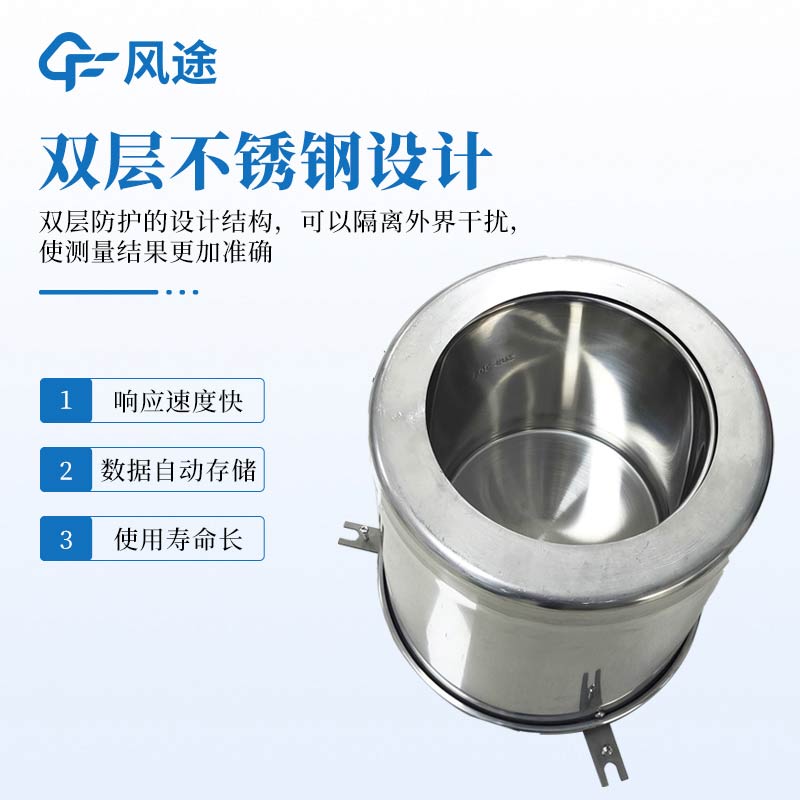Shandong Fengtu IOT Technology Co., Ltd
Sales Manager:Ms. Emily Wang
Cel,Whatsapp,Wechat:+86 15898932201
Email:info@fengtutec.com
Add:No. 155 Optoelectronic Industry Accelerator, Gaoxin District, Weifang, Shandong, China

Sales Manager:Ms. Emily Wang
Cel,Whatsapp,Wechat:+86 15898932201
Email:info@fengtutec.com
Add:No. 155 Optoelectronic Industry Accelerator, Gaoxin District, Weifang, Shandong, China
time:2024-07-22 08:35:57 source:Weather Station viewed:490 time
Surface evaporation is the process by which a body of water releases water to the atmosphere through evaporation and is usually measured in millimeters of evaporation per day (mm/d). For example, annual evaporation may reach 980 mm, while monthly evaporation in June is 125 mm. Factors that affect the rate of evaporation include air humidity, wind speed, air temperature, and the size of the water body.
It is important to note that evaporation rates measured by evaporators are usually higher than those of natural water bodies. This is due to the differences in the dynamic and thermal conditions of the evaporator and its surroundings compared to natural water bodies. In order to more accurately reflect evaporation from the actual water body, the observed values from the evaporator need to be multiplied by a discount factor.
In hydraulic engineering, it is critical to have accurate data on water surface evaporation. These data help us to understand the water loss from water bodies such as lakes and reservoirs, and also play a key role in predicting and calculating water demand for irrigated agriculture, especially rice cultivation. Using this information, water resources can be assessed and allocated more accurately, thus optimizing the efficiency of water use and ensuring sustainable management of agricultural production and water resources.
The FT-ZF1 Weighing Water Surface Evaporator utilizes the principle of pressure-based measurement to calculate evaporation by monitoring the change in weight of the liquid in the evaporating dish. This sensor is not affected by the environment such as icing, has high measurement accuracy and fast response speed, and is suitable for many fields such as meteorological observation, agriculture, forestry and geological survey. It can not only be used in conjunction with automatic water filling devices and data acquisition equipment to realize automatic monitoring and data storage, but also can be combined with rainfall sensors and other equipment for automatic observation and remote transmission of evaporation and rainfall.
The sensor is made of 304 stainless steel, which is corrosion-resistant and rust-free, ensuring the long-term use of the equipment. Its double-layer protection design structure effectively isolates external interference and improves the accuracy of measurement. In addition, even in the event of a power outage, the sensor can continue to provide accurate data output after power is restored.

automatic weather station definition Automatic Weather Station (AWS) is an observation device that automatically collects, stores, and transmits weather information, an automated version of a traditional weather station....
When selecting a suitable wind sensor for an automatic weather station or wind measurement system, the different characteristics of ultrasonic and mechanical wind sensors need to be weighed.Mechanical strength is an important consideration when selecting a wind sensor. While ultrasonic wind sensors...
The new automatic weather station is a new modern meteorological monitoring system that uses the Internet of Things, computers, wireless communication, and network technology in the traditional means of meteorological observation. It has the following advantages compared with the previous manual wea...
Greenhouses play a vital role in agricultural production, providing indispensable support for the cultivation of high-value vegetables, anti-seasonal crops and rare fruits, making their position in the modern agricultural field more and more prominent.Greenhouse greenhouse has many advantages, it is...